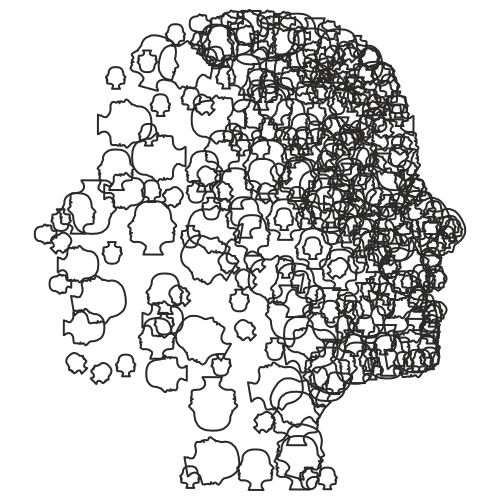
What is a Portrait urn?
At first glance, a Portrait urn is an ordinary urn with a strong relief, but nothing could be further from the truth. The portrait urn is round and follows the profile of the face from top to bottom. A regular urn can be a cold object that is often hidden on top of a cupboard. However, at first glance, the Portrait urn looks like nothing more than an elegant piece of decoration in your interior. When outside light or a lamp shines on it, its special side becomes visible; the shadow of the urn reveals the line of a face. It is a familiar face that deserves a warm place in your home. A beautiful, subtle way to keep someone’s memory alive among his or her relatives.
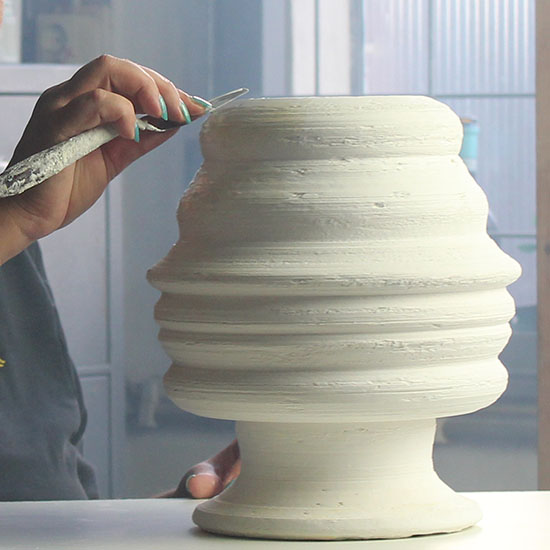
How is a Portrait urn made?
The Portrait urn is made and painted entirely by hand.
We receive images of the person in question from the customer. Based on this, contour drawings are made. We email these to the customer, who can take their time to assess which contour best recognizes the loved one. Adjustments can be made if necessary. Only when the contour drawings have been approved do we continue to make the urn in the studio. Here we sand, pour, refill, grind and color until the urn is ready.
During the production process, we occasionally send the customer a photo; this way, they stay informed and see the personal work of art being created.
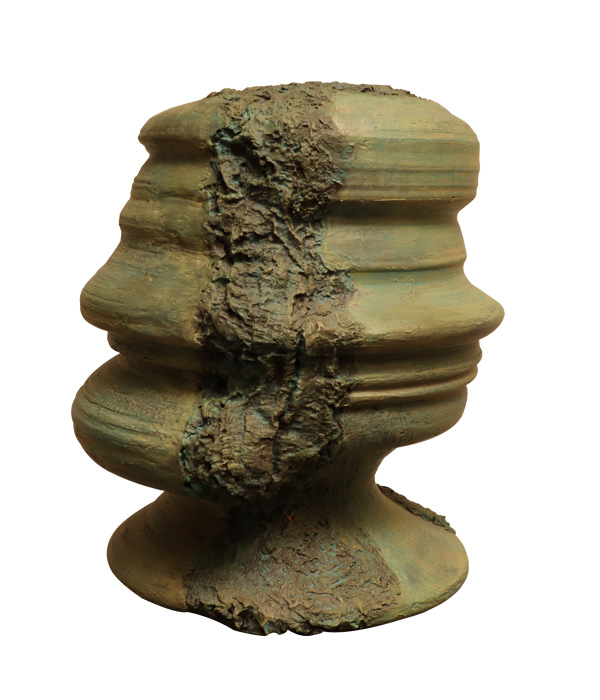
Duo Urn
Two faces combined
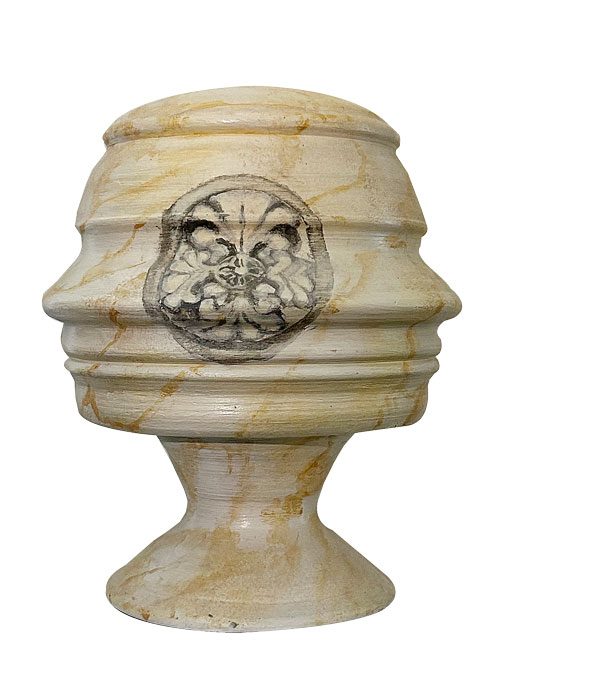
Portrait Urn
without shadow
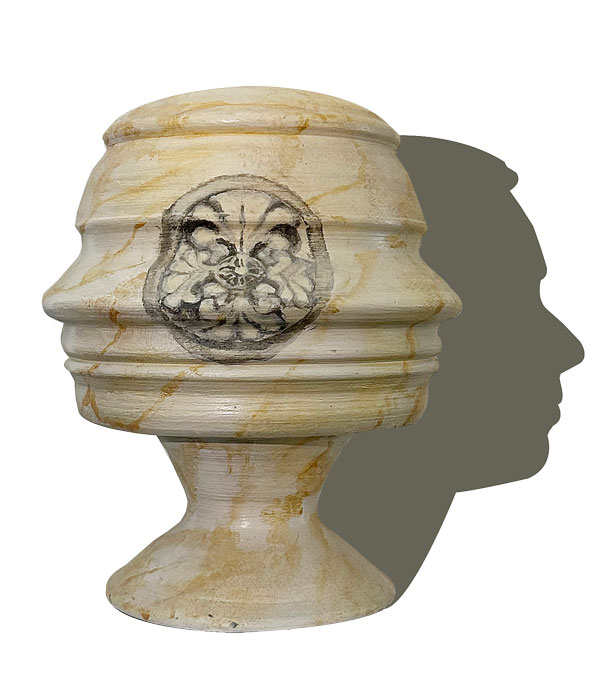
Portrait Urn
with shadow
What are the variations?
The Portrait urn can be made in different materials; Acrylic One, bronze, aluminum and concrete.
It is available in 3 standard sizes:
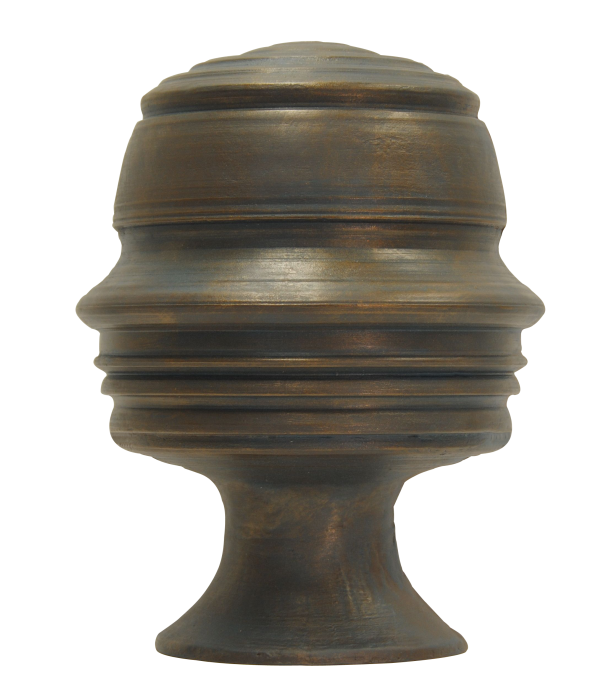
27.5 centimeters / 11 inch
€ 1250 / $ 1,464
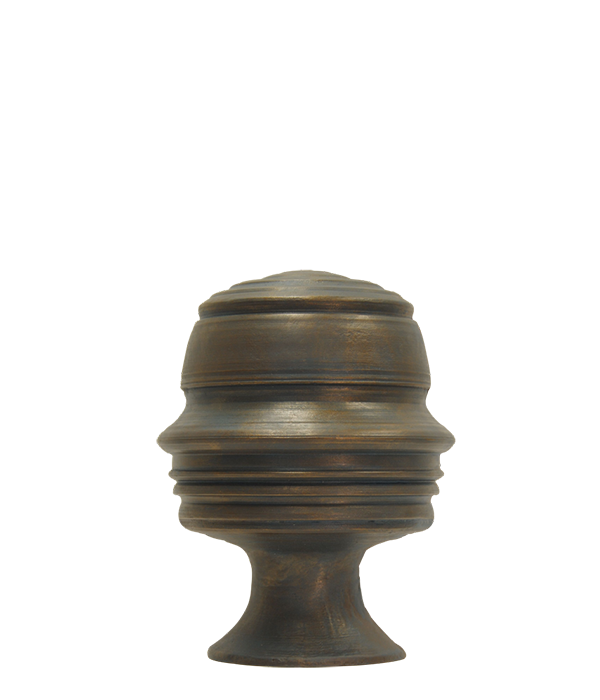
17.5 centimeters / 7 inch
€ 995 / $ 1,165
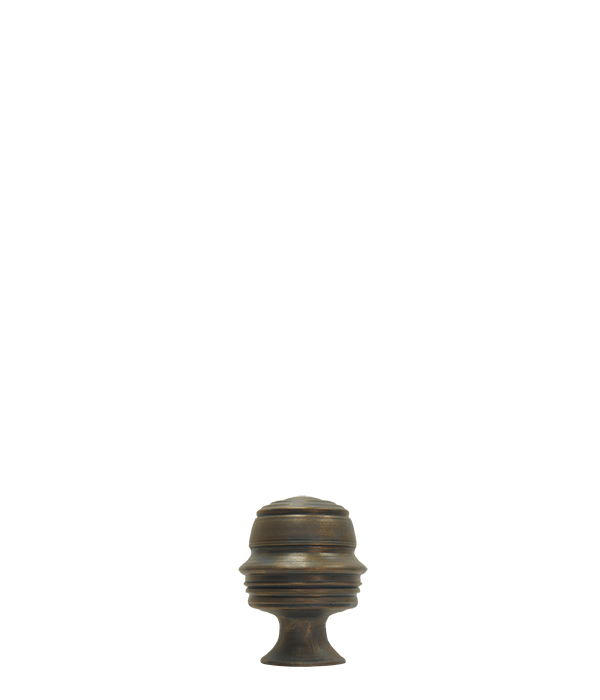
7,5 centimeters / 3 inch
€ 575 / $ 673
And in 5 standard colours:
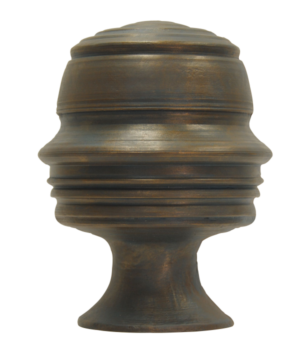
Bronze Dark
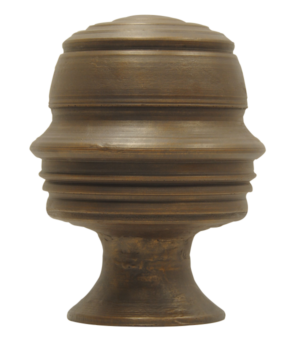
Bronze Classic
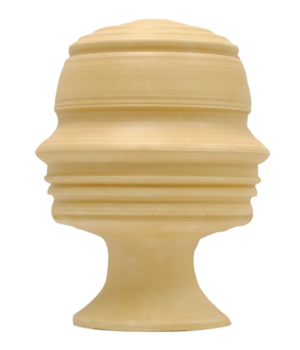
Ocre Sand
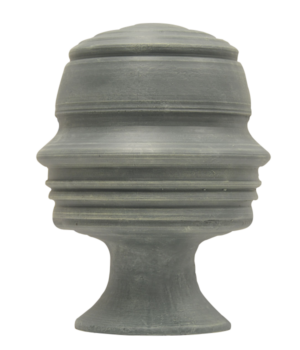
Lagune Blue
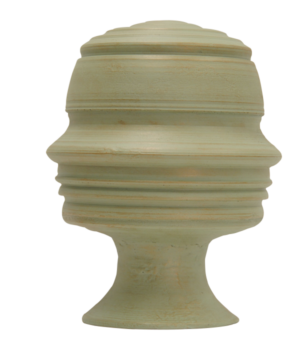
Lagune Green
- For an additional charge of € 395 / $ 395, you can have the Portrait urn painted in your own desired color. Please indicate in the order form under comments / special requests which color / colors you want.
- For an additional charge, you can have the Portrait urn painted according to your own design. Also indicate here under comments / special requests which design you want the Portrait urn painted with.
- After receiving (and possibly consulting) your wishes, you will receive a quote for the total additional charge.
- For examples / inspiration of desired colors / paintings: see portofolio.
